12
ETERNAL CLONES, MUMMIES, AND HYBRIDS
You know and I know my clone sleeps alone,
She’s out on her own forever
She’s programmed to work hard, she’s never profane,
She won’t go insane, not ever
No V.D., no cancer, on TV’s the answer
No father, no mother, she’s just like the other
And you know and I know my clone sleeps alone
PAT BENATAR, ROCK ARTIST
THE EGYPTIANS BELIEVED the body was a manifestation of physical harmony formed by the divine complexities of the soul. The closest translation to English of their word for death—which they don’t have a word for—is a term referred to as “westing,”1 because it is associated with the Sun’s disappearance on the western horizon each night. Similar to other ancient cultures, the Egyptians believed in reincarnation. Just as the Sun sets each day in the west and rises each day in the east, thus was death and rebirth. The ancient Egyptians elaborated on their beliefs about the afterlife by preparing earthly bodies with specific ceremonial procedures and mummification. They surrounded the deceased with their personal material goods, including furniture, wine, and food. Included were the mummified remains of their physical bodies and internal soft organs. Following the prescribed funerary rites, the organs were soaked in perfume and kept in vases called canopic jars.
When discussing these practices, traditional Egyptologists claim that the Egyptians were obsessed with death. It seems unlikely that the Egyptians would be obsessed with an idea they didn’t even conceptualize, per se. Instead, the obsession is more with resurrection and rebirth. The ancients believed that if the physical body had met all its earthly needs, the soul would be free to move into the realms of the afterlife. More importantly, the ties to the earthly world would be severed, leaving the essence of the soul a choice to reincarnate or not without being tethered to the former life. However, there may be more to the genius of ancient Egyptian funerary practices than what we assume.
Ancient Egyptians taught the populace the importance of living a good and just life by instilling in their minds the parable known as the Weighing of the Heart ceremony. When our soul leaves our body at the point of death, Anubis, the jackal-headed god, met that soul. Anubis would announce to the one who had passed that he had dropped his earthly garment. The deceased then stood before the gates of the underworld and had his heart weighed against the goddess Maat’s feather of Truth. The soul itself would judge its own accomplishments in life, and if any remembrance brought heaviness to the heart, the scales would tip. Fair witnesses, or objective onlookers, would observe the evaluation. Had the life been lived well and in a moral fashion, the heart would be “light as a feather” and the soul would proceed to the next realm of the underworld.2
Judaism and Christianity would distort this scene thousands of years later, calling it Judgment Day. In the Christian version, Peter meets the soul at Heaven’s Gate. A life review would ensue, and external adjudicators would harshly judge the person. Religious fables instilled the fear of God and of eternal damnation to Hell if the deceased had not followed the commandments. This revision of the collective cultural myth significantly changed not only visions of what happens when people die; it also changed how people live. But the church did not stop there. The idea of reincarnation was a widely accepted notion in the religious beliefs of most ancient cultures. Even early Christianity appears to accept this natural cyclical progression. Nature recycles everything! It is how new life is fostered from death. The foundation of reincarnation is the idea that our souls cannot learn every lesson in one life. Dramatically, in 325 CE, at the Council of Nicaea, reincarnation was outlawed after Constantine declared Christianity to be the state religion of Rome.3 There were dire consequences for anyone who continued to believe in reincarnation, and offenders would be tortured and killed.
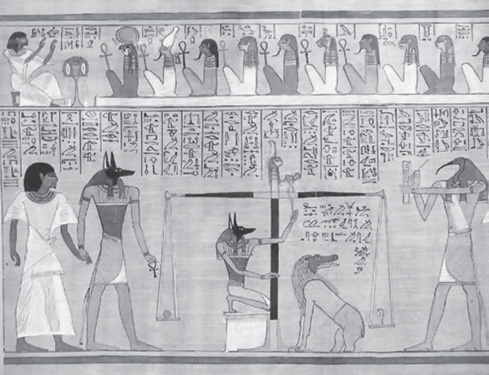
Figure 12.1. Weighing of the Heart. Courtesy of Jon Bodsworth.
Over time, all things Egyptian were raided, stolen, eroded, destroyed, removed, mistranslated, and eventually forgotten by later Christian scholars and writers.4 The Council of Nicaea decided which books would be included and excluded from the official Bible. Under the threat of punishment by death, some brave souls rescued scrolls in earthenware jars and hid them in caves. In 1945 some of these scrolls were found in a small village in Egypt near the Temple of Dendera.5 While all these sacred texts held a plethora of secrets, they were damaged fragments that were translated by Christian zealots and kept from public view for decades. Today new revelations are being made as these scrolls are interpreted in a larger context without the dogma of church doctrine or the threat of death keeping their secrets from the light of day.
One of these discoveries is that early Christians believed in mummification. The Torah notes that Joseph’s family was mummified and given a huge funerary celebration and that “Joseph died at the age of 110 years; and he was embalmed and placed in a coffin in Egypt.”6 In other words, the practice of mummification was widespread before the Christians annihilated it. The thoroughness with which the practice was demonized, ridiculed, and obliterated raises a number of questions. Where did the belief in preserving the body originate?
Our advances in the field of biology and genetic composition grow by leaps and bounds, and scientists now recognize the value in conserving tissue and preserving organs. Advanced instruments can ascertain differences between our DNA today and the DNA of Egyptians 3,500 years ago, offering clues to our growing understanding of the evolution and devolution of DNA.
Time and time again, we misinterpret what the ancient Egyptians left for us because our science has lagged behind theirs. As we gain greater scientific knowledge of biology, physics, and cosmology, we can reexamine Egyptian artifacts, hieroglyphic writing, and symbolism to grasp what the ancients already understood. We were not able to properly decipher those symbols because we had not reached the level of technology required to do so. With a parade of examples of this phenomenon, we can safely assume the Egyptians had mastery of mysteries we have not yet even considered. As we stand at the crossroads of scientific discovery in the field of stem cell science, there is a movement to preserve body tissue. Recently, scientists have learned that they can preserve the greatest number of stem cells by cryopreserving the entire placenta in combination with umbilical cord blood banking.7 If newborns or their blood relatives are in need of stem cells in the future, they can be generated from that cord blood. The ancient Egyptians understood this.
The ruling practice of dynastic Egypt was based on the tradition that each dynasty was a continuous bloodline of one extended family. Each successive pharaoh had to marry the daughter of the pharaoh before him. In the last ten years, science has gained considerable insight into mitochondrial DNA, or mtDNA—which seems to be the underlying factor in the dynastic rule of Egypt. Even though dynastic Egypt was increasingly patriarchal, past matriarchal and matrilineal practices were still depended on. When the bloodline came to an end, a new dynasty started. This kept the mtDNA intact, carried through the mother’s bloodline, and ensured the matrilineal descent through the X-chromosome. The father line carries the Y-chromosome, which is inconsequential in matrilineal descent.
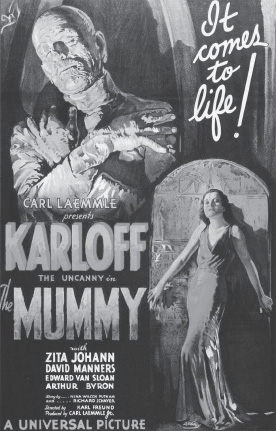
Figure 12.2. The Mummy film poster (1932). Courtesy of Universal.
For example, if we were to examine the mtDNA of a family circle composed of five related individuals and a friend, the first thing we would see is that there is one person outside the bloodline. Next we would see that, like rings on a tree that increase one per year, the marks of mtDNA can show the oldest, the middle, and the youngest of the related individuals.8 If we were allowed to examine samples of mtDNA of Egyptian mummy tissue, we would be able to conclusively point out who is related to whom and who is in a different bloodline, and who is older and who is younger. This process is essential in tracing the bloodlines through the remaining royal mummies of dynastic Egypt. During the 1800s and the 1900s, large caches of Egyptian royal mummies were found, unwrapped, and shipped all over the world, and some were put back into different sarcophagi than they were found in. Tomb raiders and rogue explorers were in search of treasure and had little reverence for the ancient beings they were robbing. As a consequence, there is a muddle in the family trees of almost all the dynasties, that of King Tutankhamen being the most notorious. However, modern Egyptology carries its own agenda when it comes to the DNA testing of mummy tissue with a long history of sabotage, especially in the case of King Tut.9
We have been told that the ancient Egyptians designed their burial methods with spiritual reincarnation in mind; however, it is much more likely that they were actually planning a physical reincarnation as well. Considering that they had their organs separated and sealed in different containers, we can posit that they were also intending a return to Earth in a physical form (see plate 47). They just didn’t realize how long it would take!
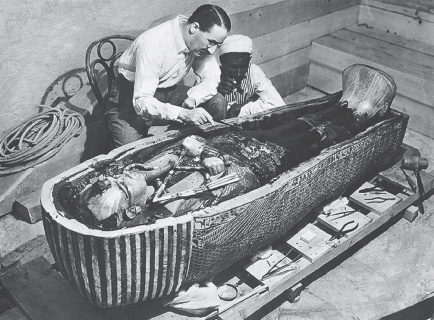
Figure 12.3. Howard Carter opens the innermost shrine of King Tutankhamen’s tomb near Luxor, Egypt. One of Carter’s water boys found the steps down to the shrine. The New York Times Photo Archive (1923).
One of the mysteries of nature is the life of the caterpillar. It is a small creature that lives long enough to wrap itself in a cocoon for a few days while generating internal energy that miraculously produces a metamorphosis. When the process is finished, the cocoon drops away and from it a beautiful butterfly appears. This mystical progression cannot be duplicated in a lab, but scientists have created butterfly hybrids.10 By combining two different-colored butterflies native to Central America, researchers at the Smithsonian Tropical Research Institute in Panama have created unique, laboratory-born butterflies. This experiment, and many like it, offer an abundance of new knowledge about creating and preserving hybrid species in labs. The results reveal a significant amount of information as to what the ancients might have actually had in mind during the process of mummification and organ preservation.
The ancient pharaohs themselves might have lost track of the initial concept of mummification’s links to cloning. In the Eyes of the Sphinx, Erich von Däniken writes, “The original purpose, the hopes of a physical resurrection was quickly forgotten. Promoted by the priesthood, which made a large profit from the business of mummification,”11 the resulting industry proved far more lucrative than its initial purpose.
With the advancements in DNA research, it is now possible to extract data from the cells of ancient mummies. Mummified DNA can preserve for eternity the genetic message contained within cells. With proper preservation of these elements, a mummified body can theoretically provide genetic information to generations far into the future. Perhaps the ancient Egyptians were recounting stories of procedures their distant ancestors witnessed thousands of years before. Nevertheless, it seems clear that they understood the preservation of body tissue and soft organs as well as the science behind cloning.
In the crypts of Hathor’s Temple at Dendera, there are frescoes of “lightbulbs” depicted high on the front and back walls, but what these devices are depicting remains a topic of much debate. The most popular theory is that these tubes represent a form of lighting or an ancient form of battery conducting electricity. Considering that no soot has ever been found near walls adorned with hieroglyphs, scientists have always wondered what source of light was used while composing and chiseling these intricate, perfectly aligned symbols. Another theory about the lightbulbs is that they represent an incubator or test tube, which clearly shows a serpent wiggling its way through the bulb. One may very well consider this an ancient illustration of the Shemsu Hor’s knowledge of advanced DNA and cloning techniques. In both the crypt and the room off the hypostyle hall, there are males holding the enormous devices. The bulbs themselves are as long as the men are tall. The base of each bulb has a large lotus flower as an exterior container of sorts. Inside the bulb is a serpentlike specimen undulating upward.
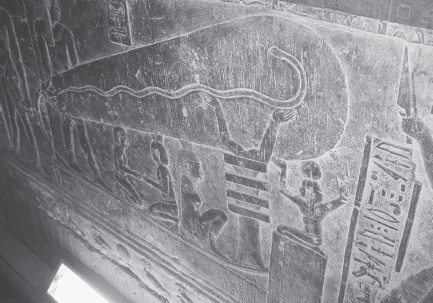
Figure 12.4. The so-called Dendera light in one of the crypts of Hathor Temple at the Dendera Temple complex. Courtesy of Lasse Jensen.

Figure 12.5. Another view of the Dendera light in one of the crypts of Hathor Temple at the Dendera Temple complex. Courtesy of Lasse Jensen.
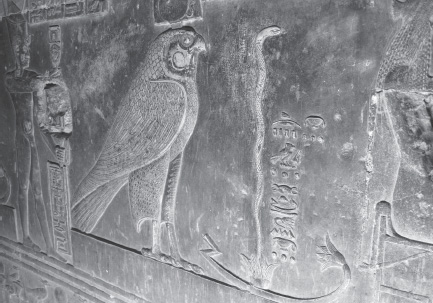
Figure 12.6. Serpent and Horus reliefs, situated on the next panel of the “ lightbulbs.” Courtesy of Olaf Tausch.
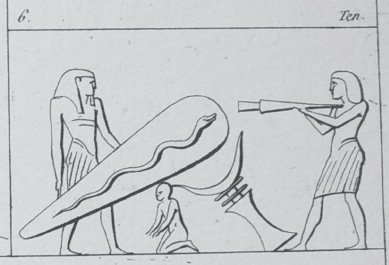
Figure 12.7. Dendera light relief sketch: travels in upper and lower Egypt, 1802. Courtesy of Vivant Denon.
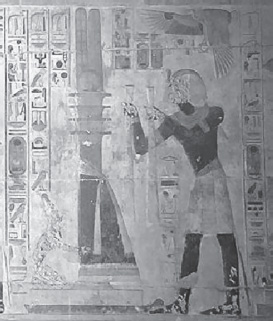
Figure 12.8. A scene on the west wall of the Osiris Hall that is situated beyond the seven chapels and entered via the Osiris Chapel. It shows the raising of the djed pillar. Courtesy of Jon Bodsworth.
These tubes representing the Shemsu Hor and DNA contain images of serpents that are connected to and grow out of the blue lotus flower, a symbol of the sacred feminine that gives life. Over time, these images would be misinterpreted and eventually morph into myths and speculation. A djed pillar, often referred to as the spinal cord of Osiris, is another out-of-place hieroglyph found near the lightbulbs, which clearly depict some sort of machine. It can be seen covering an entire wall, being propped up by men almost half the size of the device (see plate 48).
Other strange glyphs and symbols can be found accompanying the djed. The entire scene may be communicating to us the secrets of cloning and DNA. Why else would the Egyptians go to all the trouble of mummification if they never expected the preserved DNA to have a function in the distant future? This is a possibility that E. A. Wallis Budge argues:
Egyptians firmly believed that besides the soul there was some other element of the [person] that could rise again. The preservation of the corruptible body too was in some way connected with the life in the world to come, and its preservation was necessary to ensure eternal life; otherwise the prayers recited to this end would have been futile, and the time honoured custom of mummifying the dead would have had no meaning.12
It turns out that humans were not the only beings that the Egyptians mummified. The original purpose of mummifying animals may have been to preserve DNA from a variety of species. However, the sheer number of similar specimens may have turned into a business for the priesthood because archaeologists have been shocked to discover that almost every living thing in Egypt was, at some point, mummified. Scorpions, weasels, fish, eels, rats, and cats were all preserved and wrapped in cotton. Mummies of mammals, amphibians, and reptiles were all found in abundance in ancient Egypt (see plate 49).
In archaeological excavations carried out since the 1920s, it is estimated that over four million jugs filled with mummified ibis birds, and 200,000 mummified crocodiles have been discovered near the Fayyum Oasis. The ancient cult of mummification stretches back into the mysterious predynastic era of Egyptian history. It seems that the preservation of DNA was so powerful that it remained in the consciousness of Egyptians for thousands of years after the initial experiments.
Creation myths from ancient Babylon introduce us to a list of rulers associated with a time before the Flood. After the floodwaters receded, these rulers went to work maintaining and experimenting with the creatures that had survived.
Ancient historian Eusebius gives an account of this epoch in the history of the Chaldean culture:
In the first year appeared a monster endowed with human reason named Oannes, who rose from out of the Erythraean Sea, at the point where it borders Babylonia. He had the whole body of a fish, but above his fish’s head he had another head which was that of a man, and human feet emerged from beneath his fish’s tail; he had a human voice, and his image is preserved to this day. He passed the day in the midst of men without taking any food; he taught them the use of letters, sciences and arts of all kinds, the rules for the founding of cities, and the construction of temples, the principles of law and of surveying; he showed them how to sow and reap; he gave them all that contributes to the comforts of life. Since that time nothing excellent has been invented. At sunset this monster Oannes plunged back into the sea, and remained all night beneath the waves, for he was amphibious. He wrote a book on the origin of things and of civilization, which he gave to men.13
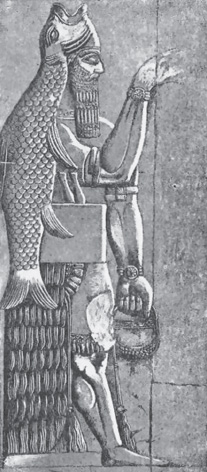
Figure 12.9. A fish-headed god, a hybrid of early Babylonian mythology. From Gaston Maspero.
Following the Babylonian creation myth, a variety of strange creatures were born out of these dark waters. Some could reproduce themselves asexually, others procreated sexually, and some were hermaphroditic, carrying characteristics of both male and female natures simultaneously. Some beings bore humans with two wings, others with four wings and two faces, and still others with one body and two heads. There were horned humans who had the legs of goats and human-horse creatures with hybrid bull features.14 These cross-cultural tales speak of diverse sorts of dragon-shaped beings, hybrid fish, reptiles, snakes, and many types of astonishing creatures of differing appearances.
According to legend, the records of these creatures were preserved at the Temple of Belus, built after the deluge. The Greek historian Herodotus, “describes in detail the spectacular and multitiered temple of Zeus Belus at Babylon. He never gives the god’s Babylonian title Bel or name Marduk, but he marks him by the foreign epitaph Belus.”15 The likelihood that the Temple of Belus will be found are slim.
Prominent biblical scholar Matthew George Easton describes the ruins as follows:
An immense mass of broken and fire-blasted fragments, of about 2,300 feet in circumference, rising suddenly to the height of 235 feet above the desert-plain, and is with probability regarded as the ruins of the tower of Babel. This is ‘one of the most imposing ruins in the country.’ Others think it to be the ruins of the Temple of Belus.”16
Corroborating the creation myth recounted by Eusebius is the newly revealed ancient Egyptian art from the Temple of Dendera that depicts the very creatures of which Eusebius speaks. These illustrations are little known, since they were hidden behind a thick layer of dark fungus until 2010 when the massive expanse of the ceiling of the temple, towering forty feet above ground level, was laboriously cleaned. It may be reassuring to consider that records of such creatures are left in fire-blasted ruins in a lost temple. That way, they can be easily dismissed as a fanciful Babylonian myth. When these creatures are visibly depicted one after another as bas-reliefs across an enormous area, we need pause and attempt to comprehend what is being portrayed. What did the Egyptians know, and how did they learn about these things? There are plenty of strange beasts and hybrid creatures found throughout ancient Egyptian art (see plate 50), and some of these bizarre biological anomalies can be verified by science today.
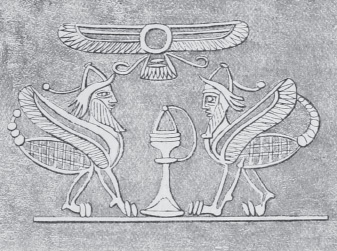
Figure 12.10. Scorpion-men of mashu underneath a winged ship. From Gaston Maspero.
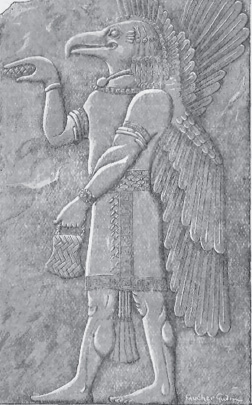
Figure 12.11. Eagle-headed god, a hybrid of early Babylonian mythology. From Gaston Maspero.
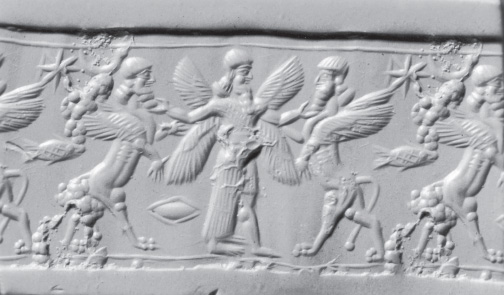
Figure 12.12. Cylinder seal with human-headed winged lions. Courtesy of Henry Walters.
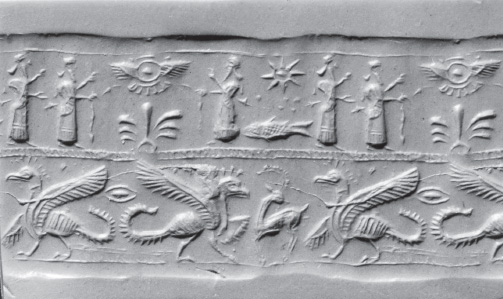
Figure 12.13. Cylinder seal with griffins and a winged disk. Courtesy of Henry Walters.
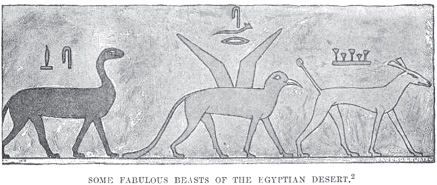
Figure 12.14. Fabulous beasts of the Egyptian desert. From Gaston Maspero.
Recent discoveries in biotechnology are redefining the realm of the possible.17 As new data is integrated into our own developmental research, we see that what was once considered science fiction is now sprouting firm roots in modern technology. Fusing scientific discoveries in bioengineering, cell regeneration, and stem cell research, scientists have opened the gateway to the controversial science of cloning. Scientists in Britain have discreetly “created more than 150 human-animal hybrid embryos in British laboratories”18 and are on track to redefine what we know about stem cell therapy.
There are even plans to clone a wooly mammoth from the well-preserved bone marrow found in a pristine femur bone discovered by Russian scientists in Siberia.19 Mainstream academia has admitted that the ability to clone ancient species is only three to five years away, which means that DARPA has most likely already done it. It would not be far-fetched to imagine a future where our grandchildren will be taking their children to the zoo to see fully cloned dinosaurs.20
Dr. Robert Lanza, chief scientific officer of Advanced Cell Technology (ACT), has conducted stem cell and regenerative medicine research for more than twenty-five years. He has successfully created clones of kidneys that could single-handedly end the need for donors. James Chapman writes for the London Daily Mail:
Scientists have created the world’s first test-tube organs in a breakthrough that could revolutionise transplant medicine. The American experts are claiming to have used cloning technology to transform cells taken from a cow’s ear into functioning kidneys. The “spare-part” kidneys were genetically identical to the cell donor and so were not rejected when they were transplanted into the animal. The scientists are confident that the same technique will work in humans within the next few years. Using just a few skin cells, doctors would be able to grow perfectly matched organs with none of the problems of rejection associated with donor tissue. They have already started trying to produce other tissues, including heart cells. The team of scientists at Advanced Cell Technologies in Massachusetts, a private firm, attracted international controversy when they announced the creation of the world’s first human embryo clones late [in 2011].21
Clones of rhesus monkeys22 have been created at Oregon Health and Sciences University. This is nothing compared to the news of a 300-millionyear-old forest recently discovered underneath volcanic ash in China. This uniquely preserved forest even predates the dinosaurs and again throws all the geological facts we assumed were true right out the window.23
The scientists responsible for cloning the first mammal, Dolly the sheep, in Edinburgh recently announced the cloning of the world’s first human brain cells.24 The advances made in cloning in the past twenty years have been incredible and beg the question: How far have we gone? In 1985 Dr. Svante Paabo, then director of the Department of Cell Research at the University of Uppsala, Sweden, reported that the preserved state of some Egyptian mummies was so perfect that they would have no problems cloning these ancient Egyptians:

Figure 12.15. Wooly mammoths near the Somme River. Courtesy of Charles R. Knight.
To elucidate whether this unique source of ancient human remains can be used for molecular genetic analyses, 23 mummies were investigated for DNA content. One 2,400-year-old mummy of a child was found to contain DNA that could be molecularly cloned in a plasmid vector. I report here that one such clone contains two members of the Alu family of human repetitive DNA sequences, as detected by DNA hybridizations and nucleotide sequencing. These analyses show that substantial pieces of mummy DNA . . . can be cloned and that the DNA fragments seem to contain little or no modifications introduced postmortem.25
All these DNA mysteries may not be confined to the Earth. Recently, NASA has admitted that our own solar system contains the building blocks required for DNA to be made in space.26 It may be astonishing to some that humankind is currently capable of bioengineering, yet it is much more astonishing to consider that the ancient Egyptians were also cognizant of these techniques. The prospect of creating clones and rebuilding tissue with stem cells is now a scientific fact. The knowledge of this new, biotechnological conquest has shed light on previously indecipherable glyphs of ancient Egypt, revealing that cloning could have been in use tens of thousands of years ago during the last Golden Age.
The iconography pointing to the knowledge that the Nile civilization has provided for us is found all over NASA, DARPA, and other corporate and military tentacles belonging to the shadow government. It seems that at the highest levels of these clandestine organizations, ancient Egypt’s past connections with aliens is indeed known and has been used to develop an entire secret space program to explore and honor this mystery.